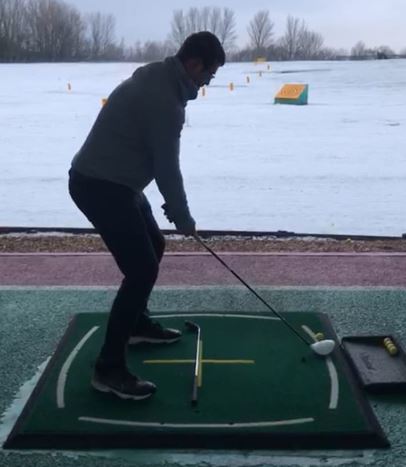Low Bounce Vs High Bounce Wedges – Does It Matter & What’s The Best Choice
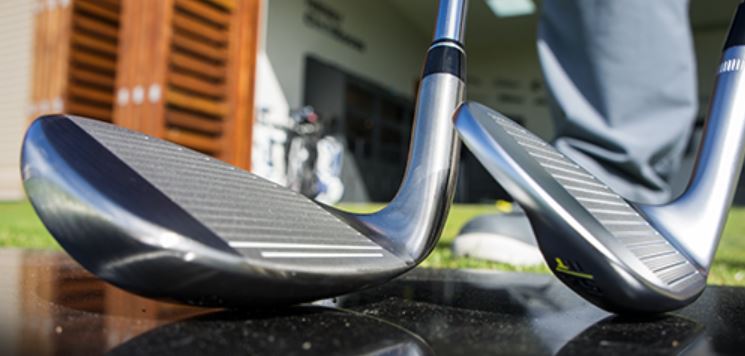
In the ongoing quest to improve my short game, I’ve been researching the different types of bounce in golf wedges. I heard that choosing or getting fitted for the optimum bounce in my wedges can seriously improve my consistency and accuracy in my short game.
However, what is low bounce and what does high bounce mean? Does the grind on the wedge make a difference and what type is the best for my swing style and handicap? Well keep reading and I’ll answer all of your questions below and soon you’ll be playing chip and pitch shots like a professional.
Intro To High Bounce Vs Low Bounce Wedges
So let’s start with the basics of wedge bounce. A club that has a bounce of 10° or above is called a high bounce wedge. These are useful in soft sand, thick rough, and for golfers who have a steep swing angle.
Whereas, clubs that offer a bounce of 4°-7° are called low bounce wedges. These are useful in light rough, hard sand, and when you might want to play a creative flop shot.
What is wedge bounce?
A wedge bounce is known as the ball launch angle that is created between the leading edge and trailing edge of the club. A high loft club that has a bounce of 4°-7° is called a low bounce wedge.
A club that has a bounce of 10° or above is called a high bounce wedge. PGA professionals commonly use low-bounce wedges as it gives them better versatility in their shots, but these have a smaller margin for error.
High Bounce Vs Low Bounce Wedge Comparison Table
Characteristic |
Low Bounce Wedge |
High Bounce Wedge |
Launch Degree |
4°-7° |
10° or above |
Suitable Usage |
Firm conditions and lighter rough |
Soft conditions and thick rough |
Examples |
PW, GW |
SW, LW |
Is High and Low Bounce Similar?
There are not many similarities among the bounce in these wedges. The only similarities between the wedges is that they have similar club lofts, shaft lengths, club head sizes.
Due to the bounce of the clubs though, they have different usages and benefits. The video below is really helpful in helping understand all about wedge bounce.
In What Ways Do They Differ
There are a lot of differences among these wedges. These can be in loft degrees, shaft length and type, bounce angle, and spin on the ball with different clubface materials.
Characteristic |
Pitching Wedge |
Gap Wedge |
Sand Wedge |
Lob Wedge |
Loft |
43°-47° |
47°-52° |
54°-56° |
58°-64° |
Shaft Length (in) |
35.5-36 |
35.5-36 |
34.5-35 |
34.5-35 |
Bounce Angle |
Low |
Low |
High |
Low-High |
Avg. Distance (yard) |
100-130 |
90-120 |
70-100 |
50-80 |
Pros Of High Bounce Over Low Bounce
Pros
- Forgiving
- High Spin
- Controlled Ball Flight
- Flop Shot
- Steep Angle of Attack with Deep Divots
- Good in Bunkers,
However, these all depend on the golfer’s playing ability, swing type, and shot lie.
Pros Of Low Bounce Over High Bounce
Pros
- Optimal Spin
- Ideal for Firm Conditions
- Shallow Angle of Attack with Little Divots
- Controlled Ball Flight
- Good for playing flop shots
Cons Of High Bounce
Cons
- It can drag in the bunkers if hit improperly and the bounce of the club is not used effectively.
- These are not great when used in firm conditions
- At times, it can generate a high spin unnecessarily making it difficult to hold the ball on the green.
Cons Of Low Bounce
Cons
- Lesser Shot Versatility makes it hard to use the bounce of the club to play the shot.
- These cannot be used in softer conditions
- If the attack angle is steep, there is a chance that a golfer digs it in the ground.
How Are Bounce and Grind Related in Golf Wedges
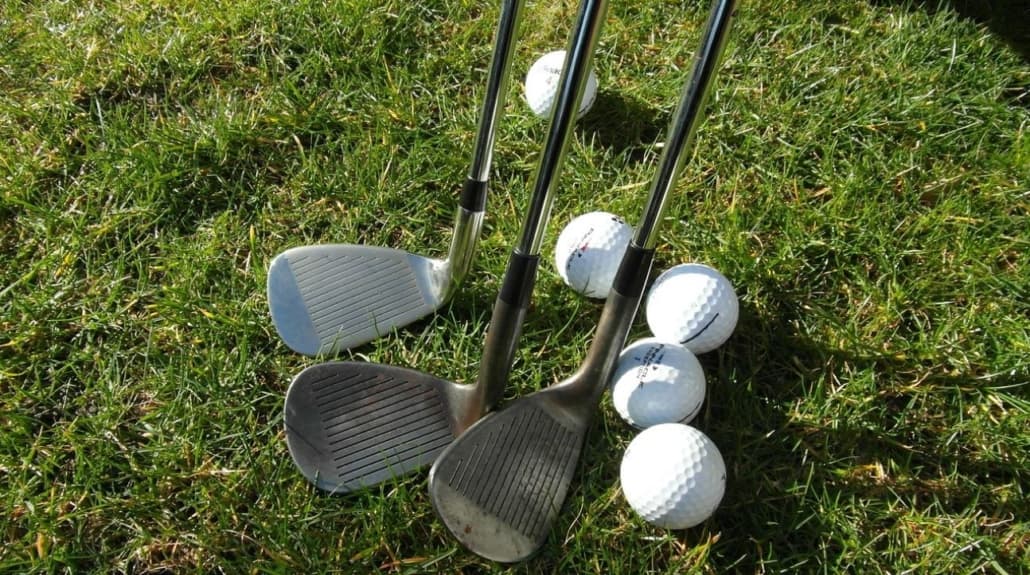
Bounce angle and grind are closely linked in golf wedges as it makes all the difference, but how are they linked?
Bounce Angle
The bounce angle is known as the ball launch angle that is created between the leading edge and trailing edge of the sole of the clubhead.
If you place the sole of the wedge sitting on the ground the angle between the sole of the leading edge of the club creates an angle. The degree of this angle is the amount of bounce, for example, low, standard, or high.
Grind
A grind is the geometry of the sole of the club head between the leading edge and trailing edge. Its purpose is to grind off any material that comes in between the ball and the ball before impact.
Titleist Vokey wedges are world-renowned for having the best custom-fitted wedges to suit all types of golfers. They say that getting the bounce and grind right to suit your swing can seriously improve your golf.
Mismatching grind and bounce angle can result in an altered bounce angle of the shot and lead to inconsistent performance with your wedges.
What Is Wedge Grind?
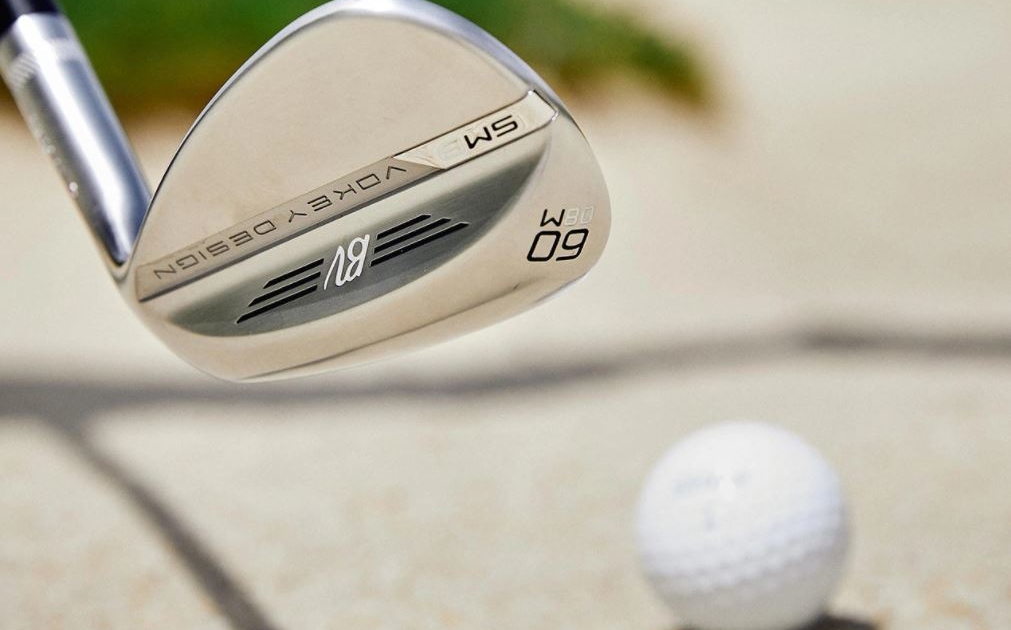
A wedge grind is the griding of material from the sole of the wedge clubhead between the leading edge and trailing edge. It is the process of grinding off any material that comes in between the club and the ground before impact. An incorrect grind and bounce angle for your swing type can result in an altered bounce angle of the shot, leading to off-target shots.
What Grind for High Bounce
Different manufacturers label their grinds in a variety of ways, there isn’t an industry standard. However, the following sole grinds are appropriate for high bounce and softer turf conditions
- D grind
- K grind
- S grind
What Grind for Low Bounce
Choosing sole grinds which are appropriate for low bounce wedges can be challenging as there is less bounce to work with. However, Vokey recommends the L grind as a good low bunce grind. This is suitable for use in firmer turf conditions, and golfers with sweeping swing styles.
What Type of Shots Will High Bounce Produce?
Several shots can be played with high bounce wedges. A high bounce angle allows the club to glide through the ball with reduced drag and less likelihood of the leading edge digging into the turf at impact.
- Bunker Shots
- Pitch Shots
- Chip Shots
- Approach Shots
What Type of Shots Will Low Bounce Produce?
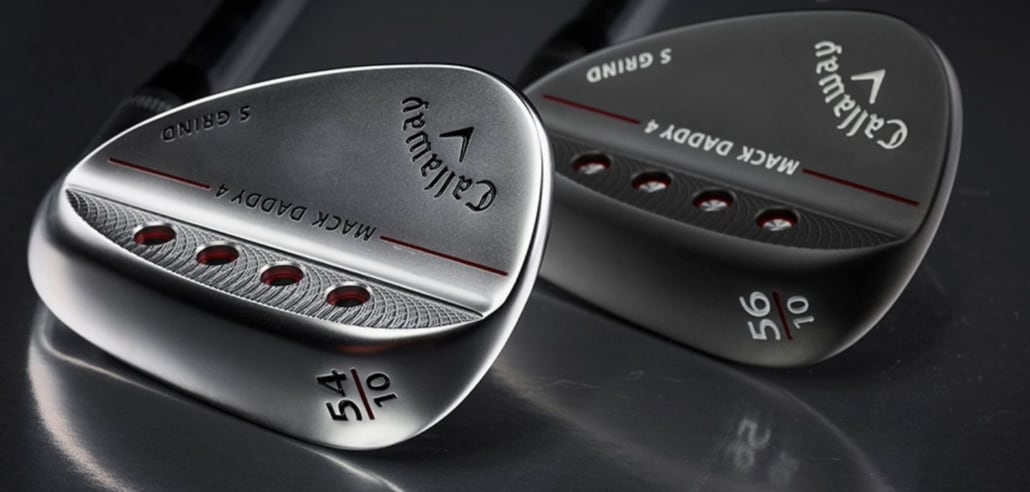
Several shots can be played with low bounce wedges. A low bounce angle allows the club to glide through the golf ball from tight lies and bunkers with hard sand conditions.
- Hard-sand Bunker Shots
- Pitch Shots
- Flop Shots
- Chip Shots
- Approach Shots
Which Types of Golfers Will Prefer Low Bounce
Golfers who have shallow attacking angles are likely to prefer low-bounce wedges. The divot size is small; however, it cuts through the turf. Shots have more distance coverage. The launch angle and spin are optimal.
Which Types of Golfers Will Prefer High Bounce
Golfers who have a steep angle of attack are likely to prefer high bounce wedges. These produce bigger divots. High bounce wedges glide through the soft turf without digging.
What’s Better for High Handicappers
High handicappers often cut through the ground for soft shots. Their swing style also tends to drag through the bunkers. Therefore, to prevent this, high handicappers should use high bounce wedges.
The bounce angle should be more than 7°. This will bring consistency in their short game with them able to use the bounce of the club and effectively ‘bounce’ the club on the ground at impact.
What’s Better Mid Handicappers
For mid handicappers, a bounce angle of 4°-10° is fine. They have a good sense of their swing style; thus, they know which wedge is to be used depending on the shot lie and turf condition. It will also allow them to be more creative with their shot-making.
What is Better for Low Handicappers & Pros
Low handicappers and professionals can use both bounce-angle wedges. They are aware of their game and swing style. For firmer conditions, they use low bounce wedges.
For softer turf conditions, they use high bounce wedges. 80% of professionals use all 4 wedges on the golf course. PGA professional Phil Mickelson is famous for his flop shots and often plays trick shots with fans where he flops a golf ball over their head from very short distances.
What are the Top High Bounce Wedges?
Below I’ve listed the best wedges for high bounce,
Cleveland’s CBX Zip Core and Full Face
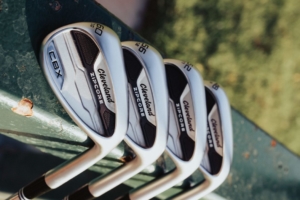
Cleveland has always been one of the most reliable brands for wedges.
Pros
- Sharp and Deep Grooves
- Full Face Grooves
- Forgiving
- High Spin
- Dark Matte Finish
Cons
- None
Score: 95/100
Check Out More Reviews Here:
Titleist Vokey SM9
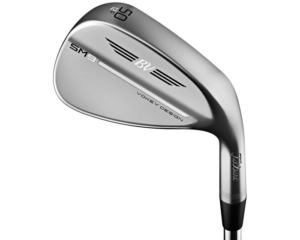
Pros
- Added Distance
- High Spin
- Wide Range of Lofts
- Available in 6 grinds
- Aesthetic Design
Cons
- Not Very Forgiving
- Slightly Heavier
- Slightly Expensive
Score: 85/100
Check Out More Reviews Here:
What are the Top Low Bounce Wedges
Below I’ve listed the best low bounce wedges:
TaylorMade Milled Grind 3
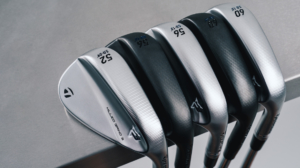
Pros
- Forgiving
- High Spin
- Good-Feel
- Wide Range of Lofts
- Controlled Distance
Cons
- Slightly Expensive
- 62° and 64° Not Available
- Rustable Grooves
Score: 95/100
Check Out More Reviews Here:
Cleveland’s CBX Zip Core and Full Face

Cleveland has always been one of the most reliable brands for wedges.
Pros
- Sharp and Deep Grooves
- Full Face Grooves
- Forgiving
- High Spin
- Dark Matte Finish
Cons
- None
Score: 95/100
Check Out More Reviews Here:
Titleist Vokey SM9

Pros
- Added Distance
- High Spin
- Wide Range of Lofts
- Available in 6 grinds
- Aesthetic Design
Cons
- Not Very Forgiving
- Slightly Heavier
- Slightly Expensive
Score: 85/100
Check Out More Reviews Here:
What About Mid Bounce Wedges?
TaylorMade Milled Grind 2.0 and 3.0, and Cleveland CBX Series wedges are the best for mid-bounce. They all are designed aesthetically with the latest technology. These are best for golfers who have no preference for either high or low bounce in their wedges.
Characteristics and how They Compare?
- TaylorMade Milled Grind 2.0 and 3.0
These are one of the best wedges set out there. Many professionals including Tiger Woods, Dustin Johnson, and Rory McIlroy use these sets. They offer a good feel, forgiveness, and high spin.
- Cleveland CBX Series
Cleveland is one of the best manufacturers of wedges. They have deep, sharp, and non-rustable grooves.
Who Will They Suit?
These wedge sets are designed for every type of golfer because these brands offer a wide range of lofts and custom fittings. Many professional golfers and low handicappers use TaylorMade’s Milled Grind Series. Mid and high-handicappers often use Cleveland because of its forgiving nature and low maintenance.
FAQs:
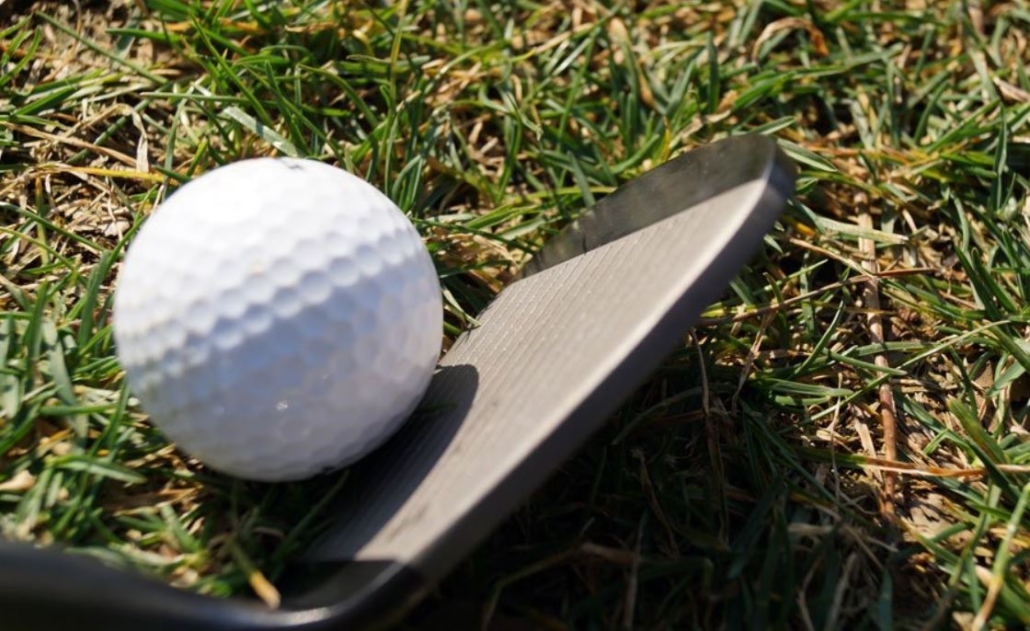
Is More Bounce Always Better?
The high bounce of the wedges is always better as long as it complies with the golfer’s shot. Generally, high bounce is preferred for soft turf conditions. Bob Vokey, a trusted short game adviser and one of the pioneers of wedge designing said, “Bounce is forgiveness in a wedge”.
Best Bounce For 60-degree Wedge
The average bounce degree of a 60° wedge is 8°. Some 60° wedges offer bounce of 10°+ whereas some produce as little bounce as 4°. However, a lob wedge or 60° should have a mid-high bounce.
Best Bounce For 52-degree Wedge
Bounce for a 52° wedge is 8°. This bounce angle comes within the range of low-mid bounce. Any bounce angle between 6°-10° is fine.
Best Bounce For 56-degree Wedge
A 56° wedge falls in the high bounce category. Its bounce angle should be 10°+. For a higher bounce, many professionals use a 10°-14° bounce with an S grind. It can either be a 56° or a 58° wedge.
Best Bounce For 58-degree Wedge
A 58° wedge falls in the high bounce category. Its bounce angle is 10°+. For a higher bounce, many professionals use a 10°-14° bounce with an S grind. It can either be a 56° or a 58° wedge.
Do 2 degrees of bounce make a difference?
Yes, 2 degrees of bounce can entirely change the shape and flight of the shot. A bounce angle of 7° or 8° is considered a mid-low bounce. Whereas, a bounce angle of 10° falls in the high bounce tier.
What wedge bounce is best for tight lies?
Low bounce wedges are best for tight lies and firm conditions. These wedges cut through the turf with small divots. Whereas, high bounce wedges should be used for easier lies and softer turf conditions.
What is S grind on a wedge?
S grind is the geometry of the sole of the club head between the leading edge and trailing edge. Its purpose is to grind off any material that comes in between the ball and the ball before impact.
S grind is only used in softer turfs for attaining a higher bounce. This grind can be used for 54°, 56°, 58°, and 60° wedges.
What wedge grind is most forgiving?
K grind offers the most forgiveness in wedges. This grind has a wide sole which is preferred for bunker shots. K grind offers little to no drag during the shots. It is used for high-bounce wedges.
What is the easiest golf wedge to hit?
Bob Vokey, a trusted short game adviser and one of the pioneers of wedge designing said, “Bounce is forgiveness in a wedge”. Therefore, any wedge that has an optimal and controlled high bounce would be easier to hit.
Cleveland’s CBX series, TaylorMade’s Milled Grind Series, and Ping Glide Series have the easiest wedges to hit.
What wedges produce the most spin?
According to Todays Golfer, the following wedges have the best spin rates,
- Ben Hogan Equalizer II: 10,520rpm
- TaylorMade Hi-Toe Raw: 10,248rpm
- PXG 0311 Forged: 10,057rpm
- Callaway Jaws MD5: 9,971rpm
- TaylorMade MG3: 9,910rpm
To produce maximum spin, picking the right ball is important. Additionally, the grooves of the wedges should be clean.
What is the rule of 12 in golf chipping?
The Rule of 12 in golf chipping is a technique where a golfer divides the entire distance of the chip shot to the hole into 12 parts. This eases the calculations and increases the distance accuracy for the golfers.
For low lofted clubs, the flight will be lesser and the roll will be greater. For high lofted clubs, the flight will be more and the roll will be lesser.
What two wedges should I carry?
Most professionals carry 4 wedges, 2 for low bounce and the other 2 for a high bounce. However, if a golfer is to carry only two wedges, one should be PW for low bounce and the other should be SW for a high bounce.
What bounce is best for flop shots?
Flop shots usually have a high bounce. The bounce angle should be between 10°-14°. However, a low bounce wedge can also produce a flop shot given that the lie is tight and the turf is firm.
What is S grind on a wedge?
S grind is the geometry of the sole of the club head between the leading edge and trailing edge. Its purpose is to grind off any material that comes in between the ball and the ball before impact.
S grind is only used in softer turfs for attaining a higher bounce. This grind can be used for 54°, 56°, 58°, and 60° wedges.
Conclusion
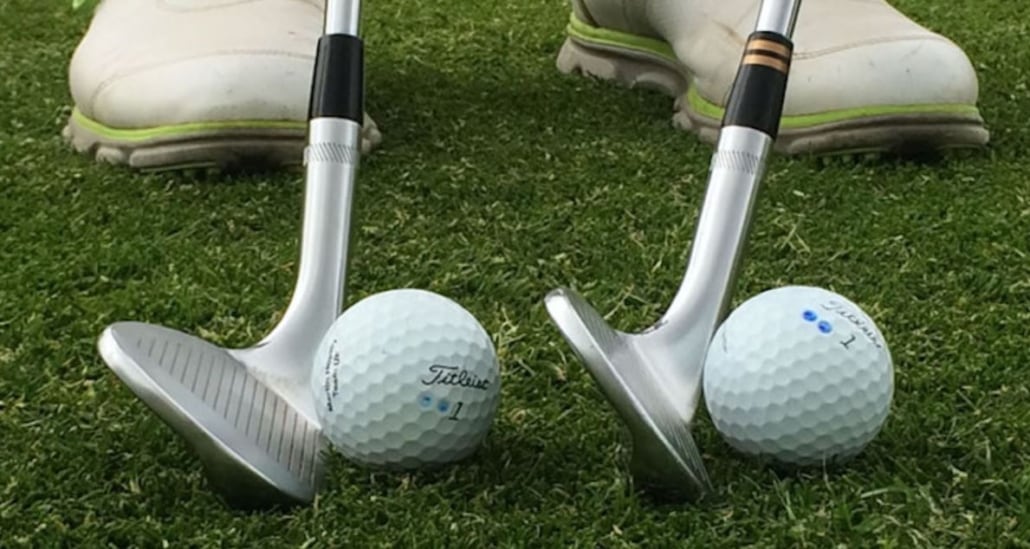
So, I hope you found this summary of high and low bounce wedges useful. In my research for this article, I certainly took some time to reflect on which type of wedge bounce would be better for my game.
If you are a higher handicap golfer you will find a high bounce wedge more suitable, it will be more forgiving as you can use the bounce when hitting the ball. Low handicap golfers are generally more suited to low bounce.
However, the best thing I learned was that getting fitted by a professional would provide the best insight into my game and what style of bounce I’m most suited to. If you want to continue learning about how to improve your golf why not have a look at our other articles, such as whether low spin golf balls can help your game.

